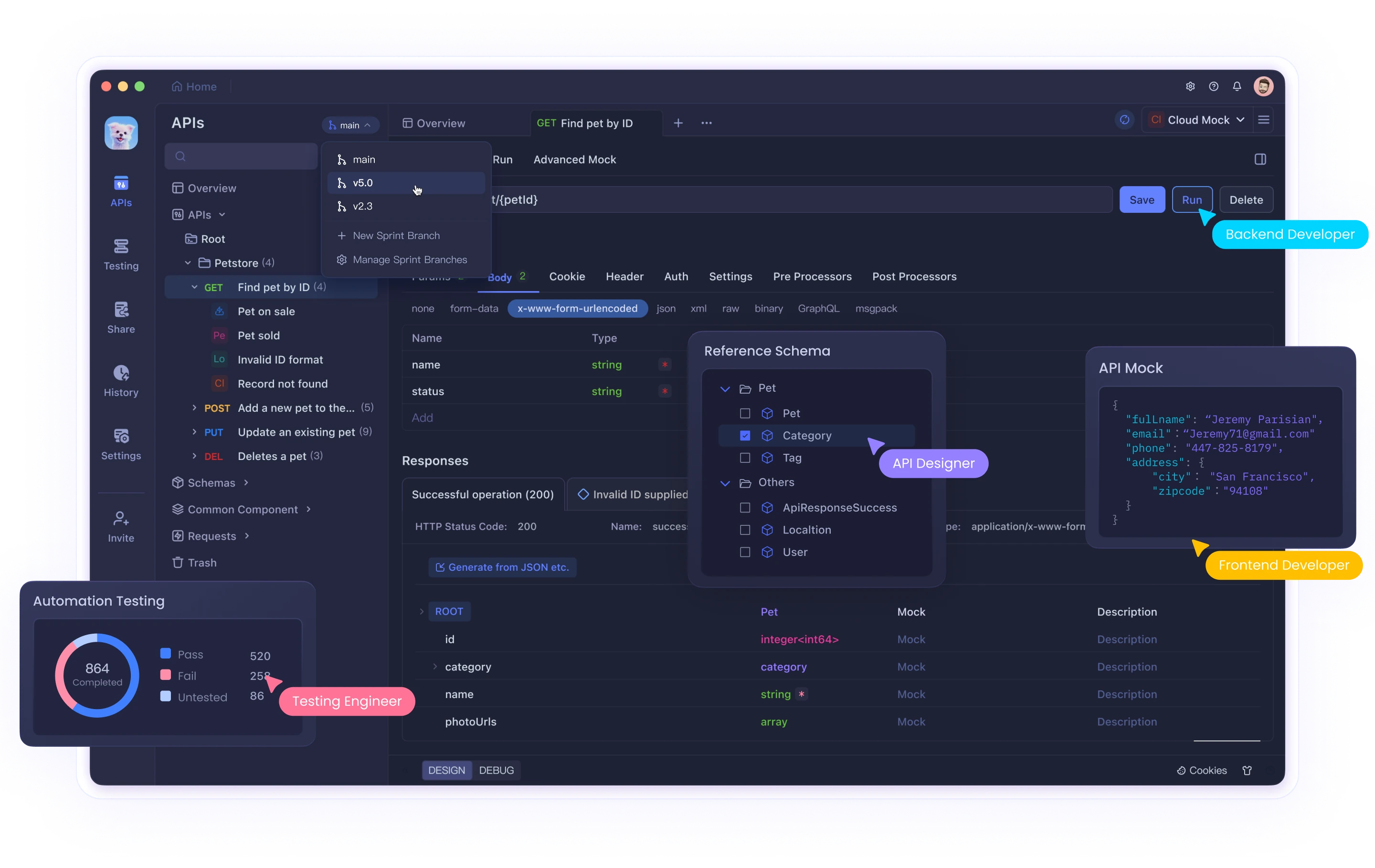Ensuring the security of APIs is crucial as they serve as the backbone of modern applications, facilitating the exchange of sensitive data. Testing these APIs for vulnerabilities has become a priority for developers and security professionals alike. Pynt, a tool specifically designed for API security testing, offers a streamlined approach to identifying and mitigating security flaws in your APIs. This article will guide you through the steps of using Pynt to enhance the security of your APIs, from setup to test execution, and will highlight best practices to ensure robust protection.
What is API Security Testing?
API security testing is the process of scrutinizing APIs to identify vulnerabilities that could expose sensitive data, allow unauthorized access, or disrupt services. APIs often act as the gateway between various applications, systems, or even third-party services, which makes them prime targets for attackers. Ensuring that they are secure is essential to maintaining the integrity of your system.
At the core, API security testing focuses on several critical areas:
- Authentication: Verifying that users or systems interacting with the API are who they claim to be.
- Authorization: Ensuring that authenticated users have the appropriate level of access.
- Data Exposure: Checking for inadvertent exposure of sensitive data, such as personal information or credentials.
- Injection Vulnerabilities: Preventing injection attacks like SQL injection or command injection, which can manipulate the backend systems through unvalidated input.
The necessity of API security testing has grown as APIs are increasingly used to facilitate communication between critical systems. The dynamic nature of APIs, along with their frequent updates and interconnections, means that traditional security testing methods are often insufficient. APIs might pass functional tests but still be vulnerable to attacks that exploit overlooked security flaws.
Automated API security testing, such as what Pynt offers, plays a crucial role in modern software development. It allows developers to continuously monitor APIs for security risks, ensuring that no vulnerability is left unchecked. Automated tests help catch vulnerabilities early, especially in fast-paced development environments where APIs are frequently updated or modified.
Moreover, API security testing complements traditional code reviews and manual penetration tests by providing scalable, repeatable, and systematic checks across the entire API ecosystem. This combination ensures that security measures are maintained as APIs evolve, and potential threats are detected early.
By integrating API security testing into your CI/CD pipeline, you not only ensure that your APIs are secure at every stage of development but also reduce the risk of costly breaches or service disruptions.
Overview of Pynt
Pynt is an automated API security testing tool designed to make the process of securing APIs easier and more efficient. It integrates seamlessly with your existing development workflows, allowing you to proactively detect and mitigate security vulnerabilities in your APIs without the need for complex setups or manual testing.
Pynt focuses specifically on API security, differentiating itself from generic testing tools that might only focus on functional testing. Its automation capabilities make it an excellent choice for teams looking to ensure continuous API security across the development lifecycle. With Pynt, you can schedule regular security scans, test for common API vulnerabilities, and even integrate it into your CI/CD pipelines for real-time security feedback.
Key Features of Pynt:
- Automated Vulnerability Detection: Pynt automatically identifies vulnerabilities such as improper authentication, authorization flaws, data leakage, and injection attacks.
- Comprehensive Testing: It performs both active and passive testing, simulating malicious behavior as well as analyzing your API’s behavior under typical conditions.
- Integration with DevOps Pipelines: Pynt supports integration with CI/CD tools, allowing you to test APIs in real-time, catch vulnerabilities early, and address them before they become significant risks.
- Customizable Tests: While Pynt comes with pre-built testing frameworks for common vulnerabilities, it also allows users to create custom security tests tailored to their specific API environments.
- Actionable Reports: After each test, Pynt generates detailed, actionable reports that help teams quickly understand the nature of detected issues and provides guidance on how to address them.
Pynt’s ability to blend ease of use with advanced security testing makes it a preferred tool for both small development teams and large enterprises. Unlike traditional security testing tools, which can be cumbersome and require significant expertise to configure, Pynt is designed to be user-friendly, allowing developers and security professionals alike to integrate security testing into their existing workflows without significant overhead.
Whether you're testing APIs during development, before deployment, or after updates, Pynt ensures that your APIs are protected from potential vulnerabilities, giving you confidence in the security of your system.
We'll need a free Pynt account for the rest of this article. Please create one if you don't have yet.

To use Pynt, we'll need to make sure we have;
- Postman App (https://www.postman.com/downloads/),
- Python Installed on your Machine,
- Docker ( we need docker to run the application)
- A terminal client.
That Postman Wizard gives you everything you need to set up Pynt using Postman.
When you get to step 3 ( assuming you're following the Wizard), you'll need to spin up the Docker instance before continuing.
To spin up the Docker image, make sure Docker is installed, and run the following command:
Docker Desktop for Windows, Mac, or Linux — run from cmd/terminal: docker run -p 5001:5001 --pull always ghcr.io/pynt-io/pynt:postman-latest(the left port can be changed if already taken on your machine).
If you're on Linux, and the above command didn't work, you can try running: docker run --pull always --network=host ghcr.io/pynt-io/pynt:postman-latest
If your Docker is up and running, you'll see it on your Docker App;

With that, now run pynt postman( Last step from the wizard ). it'd then ask you to log in to your account from your browser to authenticate your CLI.

with that in place, navigate to your Postman App and run the "Goat" Collection that you've cloned.

If everything goes well for you, you can see the valuable error in that GOAT APIs, and you can be able to work with those data to fix the APIs.

If you got these responses, congratulations, you've successfully configured Pynt to work on your local machine!
Best Practices for API Security Testing with Pynt
To ensure the effectiveness of API security testing using Pynt, it’s crucial to adhere to several best practices. These practices will help you maximize the benefits of Pynt and enhance your API's security posture. Here are some best practices to follow.
Implement Continuous Testing
Security threats evolve rapidly, making continuous testing essential. Integrate Pynt into your continuous integration/continuous deployment (CI/CD) pipeline to automate security testing. This approach ensures that vulnerabilities are detected and addressed promptly, reducing the risk of security breaches.
Leverage Pynt’s Reporting Features
Pynt offers robust reporting capabilities that provide insights into the results of your security tests. Utilize these reports to analyze test outcomes, track identified vulnerabilities, and measure the effectiveness of your security measures. Detailed reports help prioritize remediation efforts and ensure that all security issues are addressed.
Regularly Update Your Test Cases
As new threats emerge and your API evolves, it’s important to update your test cases regularly. Ensure that your Pynt test cases reflect the latest security trends and address newly discovered vulnerabilities. Regular updates will help maintain the relevance and effectiveness of your security testing efforts.
Document and Review Test Procedures
Documenting your testing procedures and reviewing them periodically is crucial for maintaining an effective security testing process. Ensure that your documentation covers test objectives, scenarios, methodologies, and results. Regular reviews of your testing procedures help identify areas for improvement and ensure consistency in your testing efforts.
By following these best practices, you can enhance the effectiveness of API security testing with Pynt, identify vulnerabilities early, and ensure that your API remains secure against evolving threats.
Enhancing API Security with Apidog

In addition to using Pynt for API security testing, incorporating tools like Apidog can further strengthen your API security posture. Apidog is a comprehensive API development and testing platform that offers several features beneficial for ensuring API security.
API Design and Documentation
Apidog provides robust tools for designing and documenting APIs. Well-documented APIs are crucial for maintaining security, as clear documentation helps developers understand the expected behavior, security requirements, and potential vulnerabilities of the API. By using Apidog to create detailed and accurate API documentation, you can ensure that security considerations are integrated from the outset of API development.
Automated Testing and Monitoring
Apidog includes automated testing capabilities that can be used in conjunction with Pynt. Automated tests can be configured to regularly assess your API for security vulnerabilities, ensuring that any issues are identified and addressed promptly. Apidog’s monitoring features also help track API performance and security in real time, providing early warnings of potential security issues.
Collaboration and Version Control
Effective security testing often requires collaboration between teams. Apidog supports collaborative API design and testing, allowing security and development teams to work together seamlessly. With version control features, Apidog helps manage changes to API definitions and ensures that security testing is consistently applied across different versions of the API.
Integration with CI/CD Pipelines
Apidog integrates smoothly with CI/CD pipelines, making it easier to incorporate API security testing into your development workflow. By automating security tests and integrating them into your CI/CD process, you can continuously monitor and enhance API security throughout the development lifecycle.
Incorporating Apidog alongside Pynt can provide a comprehensive approach to API security, from design and documentation to automated testing and continuous monitoring. By leveraging the strengths of both tools, you can ensure that your APIs are secure and resilient against potential threats.
Conclusion:
In the evolving landscape of API security, leveraging robust tools and best practices is essential for safeguarding your applications. Pynt provides a powerful framework for identifying and addressing vulnerabilities, while incorporating complementary tools like Apidog can further enhance your security measures. By defining clear objectives, implementing comprehensive testing scenarios, and embracing continuous integration, you can maintain a proactive stance against potential threats. Embracing these strategies will help ensure that your APIs remain secure, reliable, and resilient in an increasingly complex digital environment.



